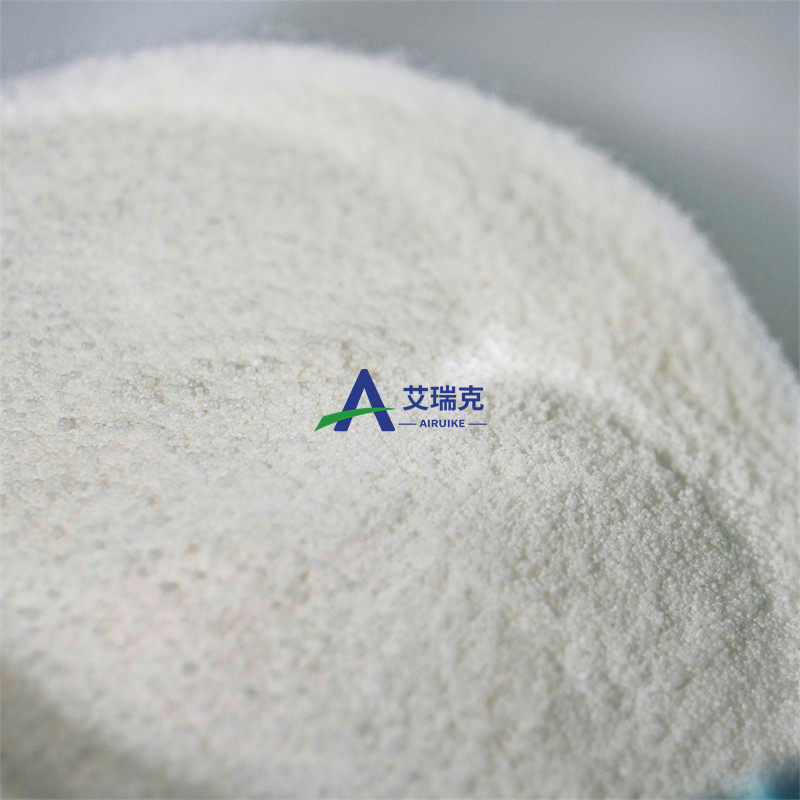October 25, 2019 Science journal essence, Zhejiang University published two Science papers at the same time.
-
Last Update: 2019-10-29
-
Source: Internet
-
Author: User
Search more information of high quality chemicals, good prices and reliable suppliers, visit
www.echemi.com
October 29, 2019 / BIOON / - -- a new issue of Science Journal (October 25, 2019) will be published this week What are the highlights of its research? Let Xiaobian come together 1 Science: new research reveals that mouse cerebellum is quite different from human cerebellum Doi: 10.1126/science.aax7526 in a new research on brain, researchers from the United States, Italy, the United Kingdom, France and Israel found that mouse cerebellum may not be a good model for human cerebellum Relevant research results were published online in the journal Science on October 17, 2019, and the title of the paper is "spatial expansion of primary generator zones in the developing human cerebellum" They described their comparative study of cerebellar development in humans, mice, and macaques The picture is from cc0 public domain Previous studies have shown that mouse cerebellum and human cerebellum are similar enough, so experiments on mouse cerebellum can be used to learn more about how human cerebellum functions The human cerebellum is part of the brain that processes and responds to sensory information In this new study, the researchers are trying to find out whether mouse cerebellum is really enough like human cerebellum to make the results of such experiments useful to humans The new study involves a very close study of the development of small and medium brains in mice, humans and macaques, another animal used in cerebellar research The researchers compared human cerebellar tissue samples from hospitals and other institutions, cerebellar tissue samples from mice in the study, and cerebellar tissue images from macaques from previous studies They found they had enough material and data to compare cerebellar development from 30 days after conception to about 9 months after birth The researchers reported that they found a completely unexpected difference - a group of progenitor cells that had never been seen in the human cerebellum, mouse or macaque brains before Prior to this discovery, only such groups of cells were seen in the human cerebral cortex They also found that some of the progenitors in an area called rhombic lip are the source of cerebellar granule neurons They found that lip development in humans took longer than in mice and macaques - it continued to mature throughout pregnancy They believe that these obvious differences may mean that the comparison of mouse and human cerebellum may not be as enlightening as people hope They also pointed out that this difference may also explain why it is difficult to model human brain defects in animal models 2 Two articles of Science: to reveal the role of symbiotic bacteria in the development of mucosal associated constant T cells doi: 10.1126/science.aax6624; doi: 10.1126/science.aaw2719; doi: 10.1126/science.aaz4014 mucosal associated constant T cells (MAIT cells) play an important role in mucosal homeostasis MAIT cells recognize microbial small molecules presented by the main histocompatibility complex, class Ib molecule MR1 There are no MAIT cells in aseptic mice, but the mechanism of microbial population controlling the development of MAIT cells is not clear Legoux et al Found that in mice, the development of MAIT cells in the thymus was dominated by the bacterial product 5 - (2-oxopropylimino) - 6-d-riboaminouracil, which was rapidly transported from the mucosa to the thymus, where it was captured by MR1 and presented to MAIT cells in the development Constantinides et al Reported that MAIT cell induction occurs only in a limited early life window and requires exposure to specific microorganisms that produce riboflavin derivatives The continuous interaction between MAIT cells and symbiotic bacteria in the skin regulates the function of tissue repair The two papers together emphasized how the microbiome can guide the development of immune cells and their subsequent function in the mucosa by secreting compounds that act like autoantigens 3 Science: abscisic acid receptor agonists protect plants from drought doi: 10.1126/science.aaw8848; doi: 10.1126/science.aaz4857 drought causes billions of dollars of losses to farmers around the world every year The key of plant water use efficiency is the signal transduction pathway regulated by abscisic acid and its receptor Vaidya et al Screened a group of candidate small molecules and optimized the function of abscisic acid receptor agonists using a structure directed design Abscisic acid receptor agonists can protect Arabidopsis, wheat and tomato from water deficiency 4 Science: there is racial bias in American health algorithm doi: 10.1126/science.aax2342; doi: 10.1126/science.aaz3873 American health care system uses business algorithm to guide health decision-making OBERMEYER et al found evidence of racial prejudice in a widely used algorithm, for example, black patients assigned to the same risk level through the algorithm were more seriously ill than white patients The authors estimate that this racial bias has reduced the number of black patients identified as requiring additional care by more than half The reason for this deviation is that the algorithm takes medical expenses as an alternative indicator of medical needs The algorithm erroneously concludes that black patients are healthier than white patients with the same disease By redesigning the algorithm so that it no longer uses medical expenses as an alternative indicator of medical needs, racial bias in predicting who needs additional care can be eliminated 5 Science: Zhejiang University has revealed that palmitoylation of Nod1 and NOD2 is necessary for the detection of bacteria The compartmentalization of proteins in doi: 10.1126/science.aau6391 cells is very important for its function The addition of lipid molecules redistributes the proteins to the cell surface or membrane-bound organelles By studying transgenic mice and tissue culture cells, researchers at Zhejiang University in China found that Nod1 and NOD2 are two proteins responsible for detecting cell products, which need lipid modification to recruit them to the nucleus and function Zdhhc5 enzyme mediates this specific lipid modification, namely palmitoylation of cysteine sulfhydryl group The loss of zdhhc5 or the removal of such important modified residues in Nod1 and NOD2 can damage their function and thus damage the antibacterial reaction Human NOD2 variants show altered palmitoylation, which may help explain many inflammatory diseases, such as irritable bowel syndrome 6 Science: the mechanism of mTORC1 docking on lysosomal surface was revealed structurally Doi: 10.1126/science.aay0166 protein kinase mTORC1 can control cell growth according to external signals In the presence of nutrients, it is located on the surface of lysosomes, where it is activated The Raptor domain of mTORC1 binds to a complex composed of ragguanosine triphosphate heterodimer and protein ragulator, in which rag heterodimer can adopt four different nucleotide conformations according to nutritional status Rogala et al Analyzed the structure of raptor-rag-ragulator complex by low temperature electron microscopy, with a resolution of 3.2 a This structure explains why Raptor only binds to the specific nucleotide conformation of rag heterodimer, and proposes a model of how mTORC1 is docked on the lysosome surface, which is the key step of mTORC1 activation 7 Science: To explore the global distribution of earthworm diversity doi: 10.1126/science.aax4851; doi: 10.1126/science.aaz5670 earthworm is a key component of soil ecological community, which plays an important role in the decomposition of ecosystem and nutrient cycle Using data from more than 7000 loci, Phillips et al Mapped the global distribution of earthworm diversity, abundance and biomass These distribution patterns are different from those common in aboveground taxa, and there are peaks of diversity and abundance in mid latitude and biomass in tropics Climate change has a strong impact on these models, and these changes may have a chain effect on other soil organisms and broader ecosystem functions 8 Science: yeast genotypes with high fitness have poor resistance to harmful mutations doi: 10.1126/science.aay4199; doi: 10.1126/science.aaz5189 robustness, or the impact of mutation on fitness, can affect the evolution of a species Johnson et al Introduced a large number of harmful mutations into many different genetic backgrounds of yeast, and found that for many mutations, the greater the fitness of the background, the greater the harmful effect of the mutation Therefore, the more suitable yeast lineage has lower tolerance for harmful mutations, while the less suitable yeast lineage can tolerate more mutations This observation supports the trend of diminishing beneficial mutation returns, which has been shown to affect adaptation patterns 9 Science: to obtain a wide range of protective human antibody doi: 10.1126/science.aay0678 targeting the neuraminidase active site of influenza virus urgently needs a wide range of protective influenza vaccine in order to neutralize the changing and deadly virus Stadlbauer et al Turned their attention away from the current vaccine target (easily mutated hemagglutinin), and studied another alternative viral coat glycoprotein with less variability: neuraminidase The authors extracted monoclonal antibodies (mAbs) from a human donor naturally infected with H3N2 virus subtypes In mice, these mAbs are widely resistant to influenza A virus groups 1 and 2 (human, avian and swine origin) and some influenza B viruses These mAbs also had therapeutic effects within 72 hours after infection This extensive reactivity may be related to the infection history of this human donor The antibodies produced by the plasma cells in his body have long segments that can be inserted into the neuraminidase active site 10 Science: Zhejiang University reveals the mechanism of action of human potassium chloride co transporter kcc1 from the structure doi: 10.1126/science.aay3129 cation chloride co transporter can transport chloride and cation on cell membrane, which is very important for regulating cell volume and setting the concentration of chloride in cell This cotransporter mutation can lead to serious diseases, such as epilepsy Researchers at Zhejiang University, China, determined the structure of human potassium chloride co transporter kcc1 through a frozen electron microscope Based on this structure, function study and molecular dynamics simulation, they proposed an ion transport model This structure provides a framework for the interpretation of disease-related mutations in potassium chloride cotransporters (BIOON Com)
This article is an English version of an article which is originally in the Chinese language on echemi.com and is provided for information purposes only.
This website makes no representation or warranty of any kind, either expressed or implied, as to the accuracy, completeness ownership or reliability of
the article or any translations thereof. If you have any concerns or complaints relating to the article, please send an email, providing a detailed
description of the concern or complaint, to
service@echemi.com. A staff member will contact you within 5 working days. Once verified, infringing content
will be removed immediately.







